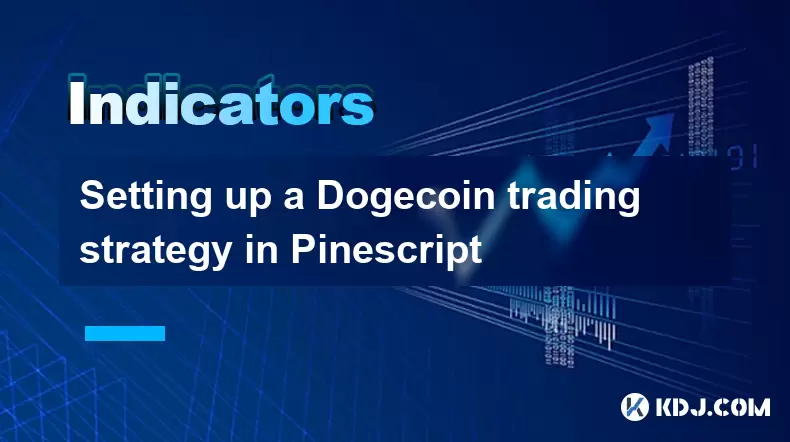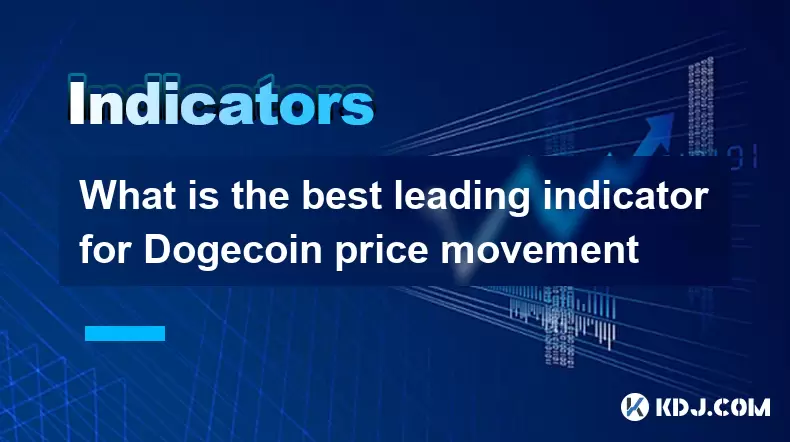-
 Bitcoin
Bitcoin $108,802.0448
0.59% -
 Ethereum
Ethereum $2,556.7655
1.66% -
 Tether USDt
Tether USDt $1.0001
-0.02% -
 XRP
XRP $2.2765
2.15% -
 BNB
BNB $662.6901
1.16% -
 Solana
Solana $151.4936
2.68% -
 USDC
USDC $0.9999
0.00% -
 TRON
TRON $0.2857
0.49% -
 Dogecoin
Dogecoin $0.1704
4.33% -
 Cardano
Cardano $0.5847
1.63% -
 Hyperliquid
Hyperliquid $39.2227
-0.47% -
 Sui
Sui $2.9110
0.60% -
 Bitcoin Cash
Bitcoin Cash $491.8681
1.55% -
 Chainlink
Chainlink $13.4311
2.12% -
 UNUS SED LEO
UNUS SED LEO $9.0273
0.09% -
 Avalanche
Avalanche $18.1653
1.64% -
 Stellar
Stellar $0.2442
2.69% -
 Toncoin
Toncoin $2.8966
5.36% -
 Shiba Inu
Shiba Inu $0.0...01180
2.95% -
 Litecoin
Litecoin $87.8955
1.49% -
 Hedera
Hedera $0.1573
1.30% -
 Monero
Monero $316.6881
0.88% -
 Polkadot
Polkadot $3.3938
1.37% -
 Dai
Dai $0.9999
-0.01% -
 Ethena USDe
Ethena USDe $1.0001
-0.01% -
 Bitget Token
Bitget Token $4.3976
0.08% -
 Uniswap
Uniswap $7.4020
6.83% -
 Pepe
Pepe $0.0...01000
3.22% -
 Aave
Aave $276.6854
2.05% -
 Pi
Pi $0.4586
-0.62%
Is a breakout of the 60-day moving average followed by a pullback without a break a short-term buy signal?
A breakout above the 60-day moving average followed by a pullback that respects it can signal a low-risk buy opportunity in crypto trading.
Jul 02, 2025 at 10:57 am

Understanding the 60-Day Moving Average in Cryptocurrency Trading
The 60-day moving average is a widely used technical indicator in cryptocurrency trading. It helps traders assess the long-term trend of an asset by smoothing out price data over the last 60 days. Traders often use this moving average to identify potential support or resistance levels. When a cryptocurrency's price breaks above this key level, it can signal a shift in momentum. However, understanding whether such a breakout followed by a pullback without breaking the average constitutes a short-term buy signal requires deeper analysis.
Why the 60-day moving average matters:
- It filters out short-term volatility, offering clearer insight into medium-term trends.
- Acts as a dynamic support or resistance level during trending markets.
- Helps traders time entries and exits more effectively when combined with other indicators.
Analyzing Breakouts from the 60-Day Moving Average
A breakout occurs when the price moves above the 60-day moving average after a period of consolidation or downtrend. This movement often signals that buyers are gaining control. In crypto markets, where volatility is high, breakouts can be powerful but also prone to false signals. Therefore, traders must verify the strength of the breakout using volume and additional technical tools.
Key factors to consider during a breakout:
- Volume: A valid breakout usually comes with increased trading volume, confirming institutional or retail interest.
- Price action confirmation: At least two consecutive candlesticks closing above the 60-day MA increase the reliability of the breakout.
- Market context: The broader market sentiment, including Bitcoin’s performance, should align with the breakout direction.
Pullbacks Without Breaking the 60-Day MA: What Does It Mean?
After a breakout, a pullback is common. If the price retraces to the 60-day moving average but doesn’t close below it, this suggests strong underlying demand. Such behavior indicates that the moving average is acting as a dynamic support, reinforcing its importance as a psychological level.
Characteristics of a healthy pullback:
- The price touches or hovers around the 60-day MA without decisively breaking it.
- Volume typically decreases during the pullback, signaling lack of selling pressure.
- The pullback doesn't erase more than 50% of the initial breakout move.
This type of pullback is often seen as a low-risk entry point for traders who missed the initial breakout.
Combining Indicators to Confirm Buy Signals
Relying solely on the 60-day moving average and pullback pattern can lead to premature trades. To strengthen the validity of the short-term buy signal, traders should incorporate additional tools:
Recommended confirmatory indicators:
- Relative Strength Index (RSI): Look for RSI to remain above 40 during the pullback, suggesting no extreme oversold condition yet.
- MACD: A bullish crossover or rising histogram confirms increasing buying momentum.
- Volume profile: Areas with high volume near the 60-day MA indicate strong support zones.
These indicators help filter out false signals and provide higher probability setups.
Executing a Trade Based on This Setup
Once the conditions align — a breakout above the 60-day MA followed by a pullback that respects it — traders can consider entering a position. Here’s how to structure the trade:
Step-by-step execution:
- Wait for the price to retest the 60-day MA after a confirmed breakout.
- Ensure that the candlestick closes above the MA during the retest.
- Place a buy order slightly above the close of the retest candlestick to avoid slippage.
- Set a stop-loss just below the 60-day MA to contain risk.
- Target a risk-reward ratio of at least 2:1 based on the size of the breakout move.
Using limit orders rather than market orders can improve entry precision, especially in fast-moving crypto markets.
Frequently Asked Questions
Q: Can this strategy work on all cryptocurrencies?
While the 60-day moving average is applicable across various assets, it works best on major cryptocurrencies with sufficient liquidity and volume. Smaller altcoins may produce erratic signals due to low trading activity.
Q: How often should I check if the price is respecting the 60-day MA?
Daily checks are recommended, especially after a breakout. Use daily charts to monitor the interaction between price and the moving average.
Q: Is this approach suitable for day trading?
This setup is more aligned with swing trading strategies. Day traders might find shorter timeframes and moving averages more effective for intraday decisions.
Q: What if the pullback turns into a full reversal below the 60-day MA?
That would invalidate the setup. Traders should exit immediately if the price closes decisively below the 60-day MA after a pullback, as it could signal a resumption of the downtrend.
Disclaimer:info@kdj.com
The information provided is not trading advice. kdj.com does not assume any responsibility for any investments made based on the information provided in this article. Cryptocurrencies are highly volatile and it is highly recommended that you invest with caution after thorough research!
If you believe that the content used on this website infringes your copyright, please contact us immediately (info@kdj.com) and we will delete it promptly.
- Litecoin Breakout Watch: What Traders Need to Know Now
- 2025-07-06 16:50:13
- Bitcoin, Solana, Ethereum: Decoding the Latest Buzz on the Blockchain
- 2025-07-06 16:50:13
- Widnes Resident's 50p Could Be Your Ticket to Easy Street: Rare Coin Mania!
- 2025-07-06 16:55:13
- Bitcoin, Solaris Presale, and Token Rewards: What's the Buzz?
- 2025-07-06 16:55:13
- Ethereum Under Pressure: Price Drop Amid Global Uncertainties
- 2025-07-06 17:00:13
- XRP, SEC Case, and Prosperity: A New Era for XRP Holders?
- 2025-07-06 17:10:13
Related knowledge

How to spot manipulation on the Dogecoin chart
Jul 06,2025 at 12:35pm
Understanding the Basics of Chart ManipulationChart manipulation in the cryptocurrency space, particularly with Dogecoin, refers to artificial price movements caused by coordinated trading activities rather than genuine market demand. These manipulations are often executed by large holders (commonly known as whales) or organized groups aiming to mislead...

What is the significance of a Dogecoin engulfing candle pattern
Jul 06,2025 at 06:36am
Understanding the Engulfing Candle Pattern in CryptocurrencyThe engulfing candle pattern is a significant technical analysis tool used by traders to identify potential trend reversals in financial markets, including cryptocurrencies like Dogecoin. This pattern typically consists of two candles: the first one is relatively small and indicates the current...

Dogecoin monthly chart analysis for long term investors
Jul 06,2025 at 10:08am
Understanding the Dogecoin Monthly ChartFor long-term investors, analyzing the monthly chart of Dogecoin (DOGE) provides a macro view of its price behavior over extended periods. The monthly chart captures major trends, key resistance and support levels, and potential reversal zones that are crucial for strategic investment planning. Unlike daily or hou...

How to manage risk using ATR on Dogecoin
Jul 06,2025 at 02:35am
Understanding ATR in Cryptocurrency TradingThe Average True Range (ATR) is a technical indicator used to measure market volatility. Originally developed for commodities, it has found widespread use in cryptocurrency trading due to the high volatility inherent in digital assets like Dogecoin (DOGE). The ATR calculates the average range of price movement ...

Setting up a Dogecoin trading strategy in Pinescript
Jul 06,2025 at 05:00pm
Understanding Dogecoin and Its Place in the Cryptocurrency MarketDogecoin (DOGE) is a decentralized, peer-to-peer cryptocurrency that was initially created as a joke but has since gained significant traction in the crypto market. Despite its humorous origins, Dogecoin has been adopted by a large community and supported by notable figures such as Elon Mu...

What is the best leading indicator for Dogecoin price movement
Jul 06,2025 at 06:00pm
Understanding Leading Indicators in CryptocurrencyIn the world of cryptocurrency trading, leading indicators play a crucial role in forecasting price movements before they occur. These tools are used by traders to anticipate potential market changes and make informed decisions. For Dogecoin (DOGE), which is known for its volatile nature and strong commu...

How to spot manipulation on the Dogecoin chart
Jul 06,2025 at 12:35pm
Understanding the Basics of Chart ManipulationChart manipulation in the cryptocurrency space, particularly with Dogecoin, refers to artificial price movements caused by coordinated trading activities rather than genuine market demand. These manipulations are often executed by large holders (commonly known as whales) or organized groups aiming to mislead...

What is the significance of a Dogecoin engulfing candle pattern
Jul 06,2025 at 06:36am
Understanding the Engulfing Candle Pattern in CryptocurrencyThe engulfing candle pattern is a significant technical analysis tool used by traders to identify potential trend reversals in financial markets, including cryptocurrencies like Dogecoin. This pattern typically consists of two candles: the first one is relatively small and indicates the current...

Dogecoin monthly chart analysis for long term investors
Jul 06,2025 at 10:08am
Understanding the Dogecoin Monthly ChartFor long-term investors, analyzing the monthly chart of Dogecoin (DOGE) provides a macro view of its price behavior over extended periods. The monthly chart captures major trends, key resistance and support levels, and potential reversal zones that are crucial for strategic investment planning. Unlike daily or hou...

How to manage risk using ATR on Dogecoin
Jul 06,2025 at 02:35am
Understanding ATR in Cryptocurrency TradingThe Average True Range (ATR) is a technical indicator used to measure market volatility. Originally developed for commodities, it has found widespread use in cryptocurrency trading due to the high volatility inherent in digital assets like Dogecoin (DOGE). The ATR calculates the average range of price movement ...

Setting up a Dogecoin trading strategy in Pinescript
Jul 06,2025 at 05:00pm
Understanding Dogecoin and Its Place in the Cryptocurrency MarketDogecoin (DOGE) is a decentralized, peer-to-peer cryptocurrency that was initially created as a joke but has since gained significant traction in the crypto market. Despite its humorous origins, Dogecoin has been adopted by a large community and supported by notable figures such as Elon Mu...

What is the best leading indicator for Dogecoin price movement
Jul 06,2025 at 06:00pm
Understanding Leading Indicators in CryptocurrencyIn the world of cryptocurrency trading, leading indicators play a crucial role in forecasting price movements before they occur. These tools are used by traders to anticipate potential market changes and make informed decisions. For Dogecoin (DOGE), which is known for its volatile nature and strong commu...
See all articles

























































































